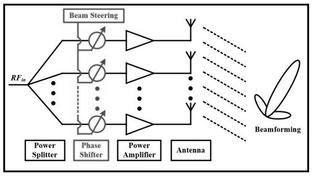Monopulse Radar vs. Conical Scan Radar: A Comparison
Advertisement
This article compares Monopulse Radar and Conical Scan Radar, outlining their similarities and differences. Both are types of tracking radar used for determining the position of a target.
Comparison Table
| Feature | Monopulse Radar | Conical Scan Radar |
|---|---|---|
| Scanning System | Simultaneous scanning system | Sequential scanning system |
| Signal-to-Noise Ratio (SNR) | Large | Small |
| Angle Accuracy | Better | Inferior compared to monopulse radar |
| Glint Effect | System performance is degraded by glint. | System performance is degraded by glint. |
| Echo Amplitude Fluctuation | Angle accuracy is not affected. | Angle accuracy is not affected. |
| Complexity | More complex | Not complex |
| Receiving Channels | 2 | 1 |
| Antenna Feeds | Two feeds | Single feed |
| Antenna Beam Rotation Speed | Relatively low speed | Relatively high speed |
| Pulse Requirement | Single pulse | Minimum 4 pulses |
| Angle Measurement | Angle measurement done in two coordinates, measured, then integrated. | Angle measurement done in two coordinates, integrated, then measured. |
| Electronic Countermeasures | Less susceptible | More susceptible |
| Cost | Relatively high | Relatively low |
| Application | Used when good angle accuracy is needed | Used when high angle accuracy is not needed |
Key Differences Explained
The table above highlights several key differences. Monopulse radar uses a simultaneous scanning system and provides better angle accuracy due to its ability to process signals from a single pulse. This comes at the cost of increased complexity and higher expense. The higher SNR also helps in difficult detection scenarios.
Conical scan radar, on the other hand, employs a sequential scanning system, requiring multiple pulses to determine target location. While its angle accuracy isn’t as precise as monopulse radar, it benefits from a simpler design and lower cost.
Angle Measurement Approaches
A significant difference lies in how each radar processes angle measurements. Monopulse radar performs angle measurement in two coordinates simultaneously, providing a more instantaneous and precise result, making it less susceptible to target movement during the measurement process. Conical scan radar integrates pulses over time before performing angle measurement, which can be affected by target motion.
Electronic Warfare Considerations
Monopulse radar’s ability to operate with a single pulse and its sophisticated signal processing techniques make it less vulnerable to electronic countermeasures, offering a crucial advantage in contested environments.
Advertisement
 RF
RF
